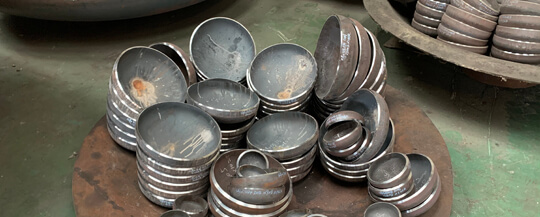The cold forming head has precise dimensions and stable quality, without the surface roughness and oxidation caused by heating, and the appearance of the head is beautiful; in addition, there is no need to worry about the deterioration of the plate due to heating.
Stress corrosion cracking
Any cold forming process will produce certain residual stress and cold strengthening, and the dish head is no exception. If the installation stress, welding residual stress and thermal stress of the container are encountered, stress superimposition will occur. If it is used in a stress corrosion environment, stress corrosion cracking may occur in a short time.
If the material is carbon steel, cracks will occur in the environment of nitrate, ammonia, alkaline sodium, etc.; for austenitic stainless steel, cracks will occur in a specific environment with chloride ions. This crack is called stress corrosion cracking.
Hot dip galvanized aluminum cracking
When the container of carbon steel and low alloy steel is immersed in hot-dip galvanizing or aluminizing liquid, the straight edge of the head may crack. Because zinc or aluminum of the low melting point metal diffuses to the grain boundary when welding residual stress and machining residual stress exist. Therefore, the container should be heat treated before the hot bath is galvanized or aluminized, to remove residual stress.
Plastic machining trace of carbon steel head
When the carbon steel is subjected to tensile deformation, a slip line will be generated in the direction of Angle 45 with the main stress. At this point, the oxide film on the material surface will fall off along this slip line.
In the vicinity of the transition section r of the cold stamping head, the traces of the oxide film falling off are lattice-like, which are surface traces caused by plastic processing. Not harmful defects.
Plastic machining trace of stainless steel head
When there are welds on the head, before stamping and forming, remove all the welds on the surface of the wafer and the excess height of the welds on the straight edges of the outer surface and the transition area before processing; Have to be removed.
For stainless steel heads, due to the difference in strength between the weld and the base metal, the center of the weld is slightly lower. During plastic processing, a slight linear indentation will occur. This is a surface trace caused by plastic processing, not cracks and other harmful defect.
